Children's headwear is an integral part of a child's everyday wardrobe. A hat, as a rule, should not only perform a protective function from weather conditions, but also aesthetically complement the baby's image. Crocheting this children's accessory is not at all difficult. Among all the variety of models, a favorite accessory for children is a headdress with ears.
Choosing the color and material of yarn for a baby hat with ears
Creating each image requires special preparation, starting with the choice of color, knitting method, and ending with the selection of yarn of suitable quality. It should correspond to the season for which the hat is intended. Thus, a winter hat is best knitted from thicker yarn, with the highest percentage of wool.
This headdress will not only serve as a beautiful addition to a child’s look, but also as reliable protection from the cold.
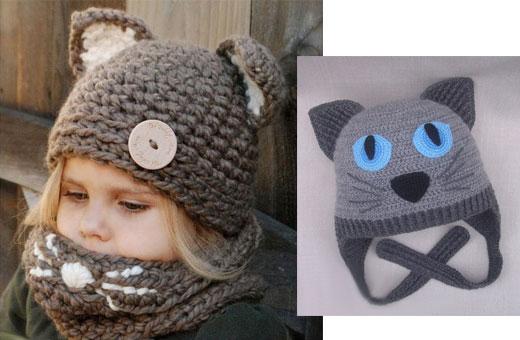
Demi-season hats do not require a large wool content, the composition of such threads necessarily includes: acrylic, viscose, cashmere. The color of the hat should be chosen so that it matches the color scheme of outerwear. We must not forget about the age, gender, and color preferences of the child.
For younger boys, rich, bright colors are more suitable: red, blue, orange, green, brown. Older boys look more harmonious in hats of calm tones. Young girls prefer light calm shades of pink, white, beige, lilac.
Older representatives of the fairer sex look good in both light and bright colored hats.
When choosing yarn, you should take into account the age of the child, so for newborns it is more suitable:
- merino wool;
- angora;
- cotton;
- flax;
- cashmere.
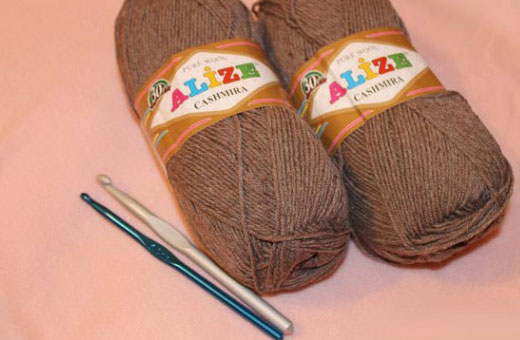
These types of yarn are hypoallergenic and soft, which is the first requirement for the baby's skin. For older children, wool, acrylic, mixed yarn, bamboo, and microfiber are suitable.
Choosing the Right Crochet Hook
A crocheted baby hat with ears will be made perfectly if you take into account the rules for selecting yarn and knitting tools: they must match the size and thickness. When choosing a hook, you should know that its sharpness should not interfere with knitting, and also be safe for the needlewoman.
It should be remembered that a hook that is extremely rounded will interfere with your work, as it will be very difficult for it to penetrate the product. Beginners are advised to choose a hook without a plastic handle. It should fit tightly to your fingers and be felt in your hand.
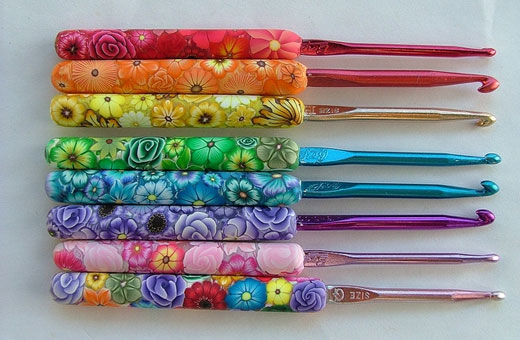
There are several types of hooks, which differ in the material they are made from and have a number of advantages:
| Hook quality | Advantages | Flaws |
| Plastic | Cheap, easy to handle. | May bend too much when knitted. |
| Wooden | Lightweight, inexpensive. | They electrify the yarn, quickly lose the smoothness of the surface and snag the yarn. |
| Aluminum | Lightweight, inexpensive, do not electrify the yarn. | They can stain light yarn and hands. They bend quickly and can break. |
| Steel | Comfortable, lightweight, durable. | They have no drawbacks and are very durable. |
| Bone | Designed for knitting with thick threads. | Expensive, fragile. |
| Combined | Made of metal and plastic or wood. | When purchasing, you should pay attention to the fact that the connection of the parts is strong. |
When choosing a hook, you should take into account that its diameter should match the thickness of the thread. The diameter of the hooks varies from 0.5 mm to 6 mm with a step of 0.5 mm. Accordingly, for a thin hook you should choose a thin thread. Such a hat will look very elegant and beautiful.
When knitting hats, hooks from 3 to 5 mm are mainly used.
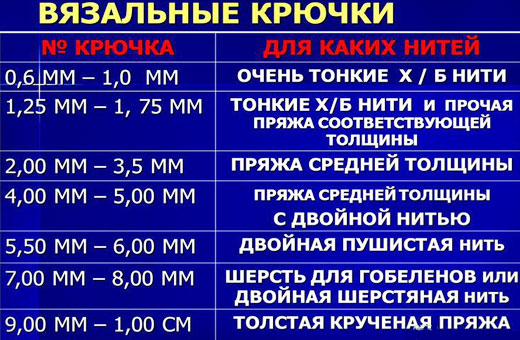
Knowing the following rules will help you avoid making mistakes when selecting a hook for a thread:
- When buying threads, you need to pay attention to the packaging: sometimes the manufacturer indicates the appropriate hook number.
- You can select threads for a hook without knowing the parameters of one of the materials, knowing that the thickness of the hook should be twice the thickness of the thread.
- When knitting, the hook must grasp the thread completely.
To calculate, you need to use a special table:
| Hook | Yarn footage | Weight of the skein |
| No. 1 | 550 m | 100 g |
| No. 2 | 400-500 m | |
| No. 3 | 300-400 m | |
| No. 4 | 200-300 m | |
| No. 5 | 100-200 m | |
| No. 6 | 100 m and more |
How to calculate hat size and knitting density
In order to accurately calculate the size of the hat, you only need to measure the circumference of the child's head. This needs to be done at the widest point: above the eyebrows and the convex occipital part. After the parameters of the OG are known, divide this figure by 3.14, this is a constant number. If a slight fit is required, you need to subtract 1 cm, for a greater density of the hat - subtract 1.5 -2 cm.
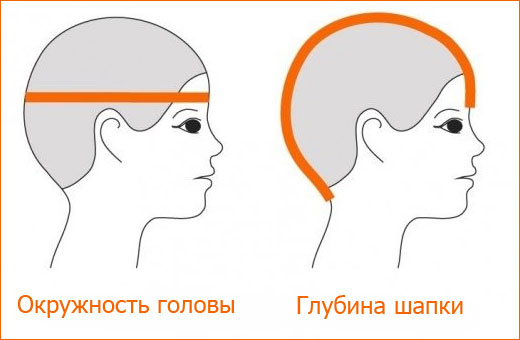
The depth of the hat is measured from one ear, inclusive, to the second through the crown. The resulting value must be divided by 2 and add 2 cm.
Table of age parameters and headwear sizes:
| Age | Head circumference | Height of the cap |
| Up to 3 months. | 36-40 | 13-14 |
| 3-6 months. | 42-44 | 14-15 |
| 6-12 months. | 44-46 | 15-16 |
| 1-3 years | 48-51 | 16-17 |
| 3-7 years | 52-54 | 18-19 |
Knitting density is the calculated number of loops and rows on a specific knitted sample of the product. This value depends on the quality, thickness of the threads, the size of the hook, the type of knitting and the individual characteristics of the skills of the needlewoman. To calculate the density of the upcoming knitting, you need to make a small piece of the sample about 10 cm long and the same in width.
It must be made from the yarn chosen for knitting the product. You can wash it to avoid the knitted item shrinking and not fitting in size. The finished sample must be measured and calculated how many loops and rows will fit in a 10 cm square.

After that, you need to divide the number of loops by 10, and the number of rows by the same number. The resulting numbers will be the density. Density is calculated separately horizontally and vertically. Then you need to multiply the length and width of the planned thing.
For example, a piece is planned to be knitted 40 cm wide and 50 cm long.
The width values are multiplied by the number of loops and divided by 10. This will give you the required number of loops in width. The number of rows in a 10 cm sample is multiplied by the length of the product and divided by 10. The resulting number will show the required number of rows.
Patterns for knitting hats for boys and girls
A children's headdress will look individual if you choose a beautiful knitting for the chosen model. You should know that some, simpler patterns are more suitable for boys, while others, more elegant ones, are created specifically for a girl's image. Thus, hats for boys and girls differ not only in color, but also in knitting.
The following patterns for knitting hats with ears are most suitable for crocheting:
The patterns for boys are more strict. There is no knitting of openwork loops with many yarns. Everything is quite simple:
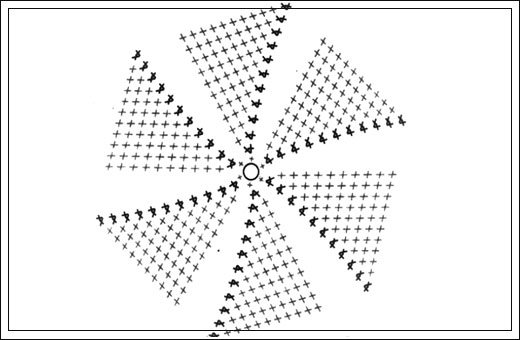
Knitting patterns for girls are distinguished by their elegance and tenderness, abundance of lace loops and beautiful reliefs:
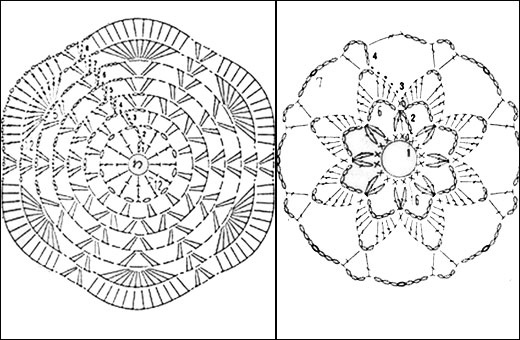
The ears are knitted separately:
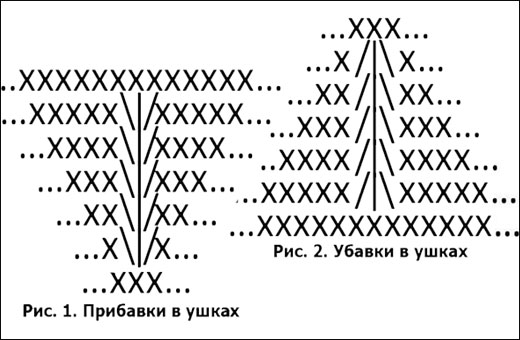
They are created using the same pattern of adding and decreasing stitches.
Master class on knitting a children's hat with cat ears
A crocheted children's hat with ears can be knitted in a few evenings.
To knit a colorful hat you will need 2 types of yarn:
- 100 g cashmere or wool with acrylic, a little lighter yarn of the same tone.
- Hooks No. 4, 7, 8.
- Measuring tape.
Video showing how to crochet a hat with cat ears:
To knit a hat with earflaps for winter, you need to add density: increase the number of threads to three. Knitting for a hat "column" will turn out to be relief, dense. The head circumference should be chosen average for children's age: 50 cm.
The bottom of the hat
First, you need to knit the base of the hat – its bottom. To do this, you need to use a 7 mm hook to cast on 3 chain stitches:
- After that, connect the first with the third, creating a closed circle.
- Then, in the second row, you need to knit 9 columns without adding loops.
- The 3rd row is knitted with 18 columns, on which 2 yarns are made: the size of the bottom increases.
- The strong base is ready. Now you can reduce the knitting density. For this you will need an 8 mm hook.
- The fourth row is knitted without increases.
- In the 5th row, add 1 yarn over every 3 stitches.
- The sixth row is knitted without yarn overs.
- In the seventh row you need to add 1 yarn over every 4 loops.
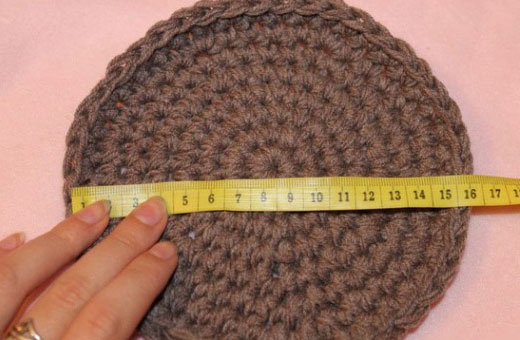
Afterwards, you need to designate the size of the required bottom. To do this, measure the circumference of your head, divide it by 3.14 and subtract 2 cm. This will give you the diameter of the bottom.
Knitting a hat
Once the required diameter is reached, you just need to knit the selected height of the hat - 18 cm with a decrease in each row. The first 2-3 rows decrease by 3 loops, the next 2 rows by 2 loops. As soon as the transition is visible, you can continue knitting with a column without decreasing to the required height of the hat.
The final 3 rows need to be tied behind the back wall and the hat is ready. Now you need to work on the ears.
Increases and decreases for ears
To knit the ears, you will need to knit 4 parts. The ears will be double. The outer ear is knitted with an 8 mm hook using columns.

The knitting pattern is as follows:
- 1st row: 1 loop.
- 2nd row: 2 loops.
- 3rd and 4th row: 4 loops each (even increase on both sides).
- 5th and 6th row: 6 loops each.
- Rows 7-8: 8 loops each.
The inner ear is crocheted from light threads with a 4 mm hook in 2 threads. It turns out denser and smaller in size.
The scheme is as follows:
- 1 row: 1 loop.
- 2nd row: 2 loops.
- 3rd and 4th row: 4 loops each (even increase on both sides).
- 5th and 6th row: 6 loops each.
- Rows 7-10: 8 loops each.
After that, both ears are tied around and crocheted together with a dark thread. The ears are ready. You can sew them to the hat. First, you need to mark the desired location of the ears, it should be symmetrical to each other.
Master class on knitting a hat with earflaps. Step-by-step description
A crocheted children's accessory with ears for boys will look more relevant as a hat with earflaps.
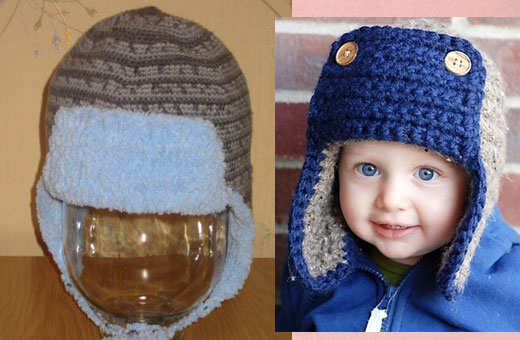
To knit this headdress you will need:
- Hook No. 2.
- Woolen threads of blue or grey color.
- Measuring tape.
The hat is knitted in several basic stages:
- Cast on 5 chain stitches, joining them into a closed circle.
- You need to knit the columns. Every second loop is accompanied by one increase. And so on 2 rows.
- Next, in rows 3-5, add one stitch through every fifth stitch.
- On rows 6-8, increase one stitch through eight loops.
- After the bottom reaches the required diameter - 20 cm, gradually begin to decrease the loops. The first 2-3 rows remove 2-3 loops, then 2.
- After smoothly knitting the transition, you need to continue knitting the columns until the desired height of the hat is 16-20 cm.
- Knitting the visor. At the end of the knitting of the height of the hat, you need to make one air loop, turn the product and knit single crochets in the opposite direction. The length of the visor depends on the distance from temple to temple, for a child of 5-7 years old it is about 16-18 cm.
- After that, turn the product and knit the entire row without a yarn over. Thus, it is necessary to knit 10 rows. Knit the beginning of the 11th row with a half-column, then knit without a yarn over, at the end of the same row knit another half-column.
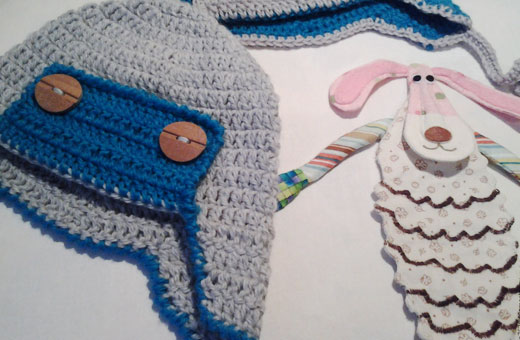
To start knitting the ears, you should continue knitting the columns to the very base of the visor in the amount of 25 without adding. After turning the product, you need to knit 5 more rows. The sixth row is needed to round the corners. Then, without tearing the thread, knit the path through the back of the hat, reaching the base of the temple from the other side. The second ear is knitted in the same way as the first.
After that, all the edges of the hat are tied with lighter yarn, the end of the thread is hidden on the wrong side. With the same light thread, knit 30-35 air loops from the middle of the eyelet for ties. Having made an air loop, begin to knit columns along the knitted chain twice. It is also necessary to knit the tie on the second side.
Once the strings are ready, the final step is to knit a column with a light thread around the entire circumference of the hat.
Children's clothing and its creation are a favorite pastime for both mothers and grandmothers. Creating a new children's image with your own hands does not take much effort or time. A crocheted hat will warm your beloved child in the cold, and a new model with ears will become an individual addition to the child's image.
Article formatting: E. Chaikina
Useful video about knitting a baby hat with ears using a crochet hook
How to knit a hat with earflaps for a child, you can see here:
https://www.youtube.com/watch?v=KJGTBqh8vwI
